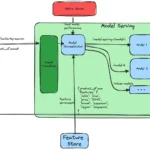Human interaction with mobile devices has evolved significantly in recent years. Applications are no longer isolated, unidirectional tools but are now seamlessly integrated into our daily lives. As mobile quality engineering advances, it is important to recognize the shifting paradigm of app utilization. This article will examine the ongoing integration revolution that is transforming our digital experience and enriching the field of mobile engineering.
More Than Icons on a Screen
Applications have become integral to our daily routines and have evolved significantly beyond simple on-screen icons. As quality engineering services have advanced, it is evident that mobile applications offer consumers seamless and interconnected experiences, transforming the manner in which they engage with technology. These integrated applications now serve as a vital element of the connected digital ecosystem, enhancing user engagement and redefining the fundamentals of application utilization.
1. The Integrated mobile experience
Traditionally, mobile applications have functioned as independent entities, each designed to serve specific purposes. However, the industry is experiencing rapid evolution, leading to increased integration among applications. For example, social media applications are no longer confined to delivering updates and news feeds. Instead, they now incorporate functionalities from various other applications to provide users with a more comprehensive social experience.
This level of integration enhances user engagement and encourages a reevaluation of the traditional concept of standalone applications.
2. Testing on integration layer
This shift toward integration introduces new challenges for developers and testers. Functional workflows can no longer be tested in isolation within a single application; instead, the focus has expanded to include the integration layer. Testers are now responsible for assessing aspects such as security, performance, API integrations, and data integrity. Adopting this comprehensive approach helps to ensure a smooth and consistent user experience across a variety of scenarios, whether for experienced users or newcomers.
3. Complex approach to health and wellness
In addition to social interaction, the wave of integration has also changed the health and wellness industry. Mobile apps in this field have evolved from simple calorie trackers and fitness planners to holistic health tracking. These apps coupled with wearable gadgets and health monitoring systems have started providing real-time insights into the physical condition of the user. These programs provide a 360-degree view of the user’s health, track heart rate during exercise and assess sleep patterns to help make informed lifestyle decisions.
4. Education beyond classroom walls
Another notable movement can be seen in the educational sector. Mobile applications have moved beyond the walls of the classroom to become dynamic platforms for interactive learning experiences. These programs combine multimedia features, virtual reality simulations, and collaborative tools to provide students with immersive surroundings. Educational apps engage learners in previously imagined ways, thanks to gamified learning modules and real-time feedback systems. Students can work together on projects, go on virtual field trips, and access a variety of information at their fingertips.
Among other things, all this is possible thanks to IoT test platforms and automated solutions. The integration of educational content with social platforms fosters a sense of community, enabling students worldwide to connect, share insights, and enhance their learning journeys collaboratively.
Adapting to the Integrated Mobile Ecosystem
A. Think like an end user
Testers serve as investigators exploring the interconnected ecosystem. To effectively evaluate the integrated experience, they should adopt the mindset of end users. This involves understanding various user personas, ranging from advanced users requiring extensive functionality to novices seeking simplicity. By considering these diverse perspectives, testers can identify potential challenges and ensure that the interface is accessible and user-friendly for all levels of experience.
B. Navigating entry and exit points
The concept of nested programs, often referred to as “maps,” creates many opportunities for input and output. Testers must carefully analyze these junctions to ensure a smooth transition between different integrated applications. Each entry point represents a contact with a potential user, and each exit point represents a completed task. By analyzing key areas of interaction, testers can optimize the user journey and ensure a smooth transition for all users.
Preparing for the Future Change
An era when apps were seen as independent islands is coming to an end. Emphasis is rapidly shifting, and the future will revolve around creating immersive, connected digital experiences. Test professionals are especially critical to the success of this transformation. Testers can ensure a smooth transition to a more user-friendly mobile development experience by being user-centric, understanding the complexity of integrated applications, and predicting user behavior (customer journey).
Step-by-step for Integrated Excellence
In summary, the emergence of mobile quality engineering represents a significant transformation in how we perceive and interact with digital solutions. The era of standalone applications is gradually giving way to integrated experiences that enhance daily workflows. This shift requires testers to adopt a broader perspective, moving beyond traditional roles to become advocates for the end user.
Testers play a crucial role in connecting technology with user experience. As we advance in mobile engineering, it is important to recognize that the core of technology lies not only in its complexity but also in its capacity to simplify and enhance the human experience. Together, as developers, testers, and users we are contributing to the development of mobile applications that serve as seamless, integrated platforms rather than merely icons on a screen.
The post How Mobile Engineering Builds Connected Ecosystems appeared first on Big Data Analytics News.

 Add to favorites
Add to favorites





0 Comments